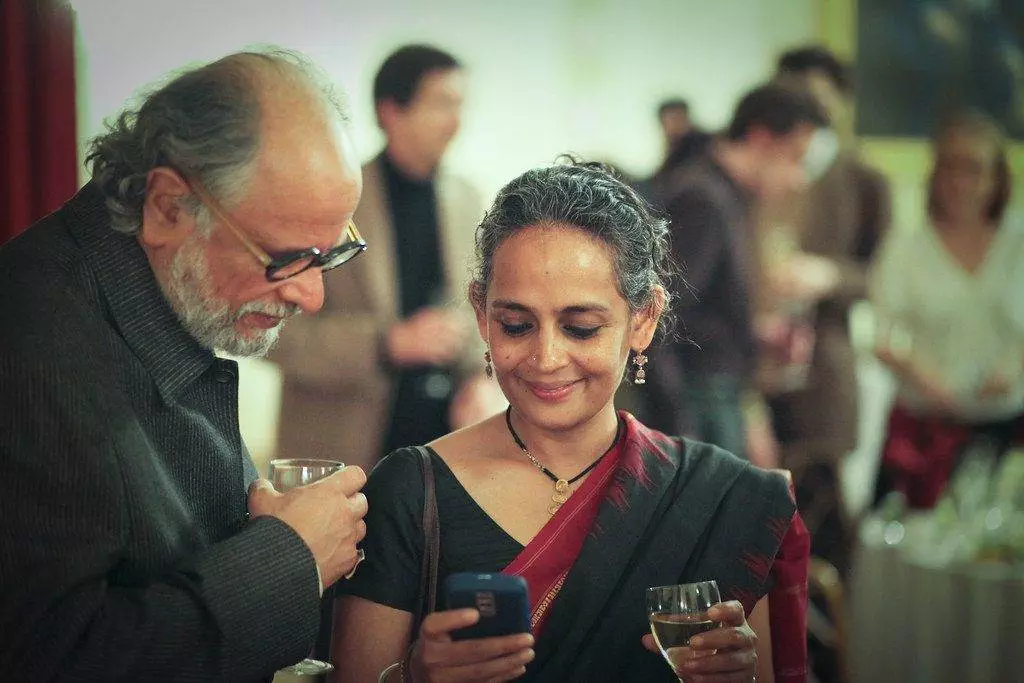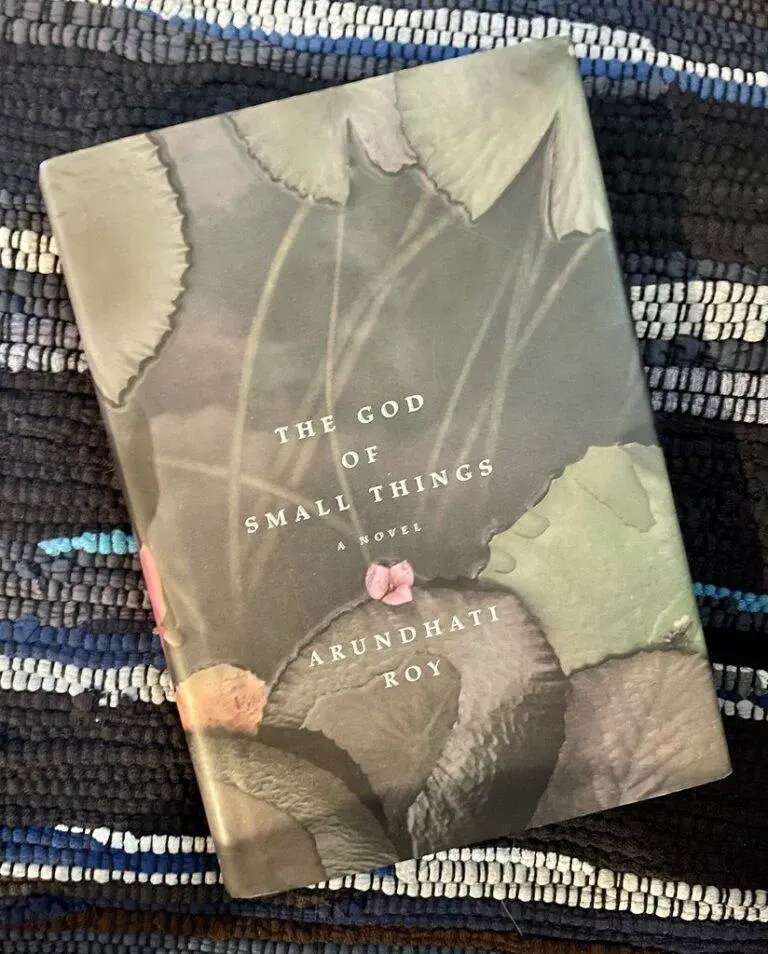The God of Small Things by Arundhati Roy is a novel with captivating narrative, compelling characters, and thought-provoking themes. Get ready to embark on a literary journey that will transport you to the heart of Kerala, India. From forbidden love and societal norms to political unrest and family dynamics, this masterpiece is brimming with profound insights and emotional depth.
Table of Contents
Discover the brilliance behind this iconic novel through our curated listicle featuring insightful analyses, memorable quotes, character breakdowns, and much more. Uncover the hidden gems within each chapter and gain a deeper understanding of the complexities woven into every page. Scroll down for reviews of our top picks that will enhance your appreciation for this timeless work.
Historical and Cultural Context: The God of Small Things
Kerala, known for its unique blend of Hindu, Christian, and Muslim influences, boasts a rich cultural tapestry. The state’s social structure has been significantly influenced by the caste system, which has historically played a pivotal role in shaping societal dynamics.
The impact of the caste system on Kerala’s social structure is profound. It has influenced various aspects of life including occupation, education, and marriage within the state. This historical context provides crucial insights into understanding the complexities depicted in “The God of Small Things.”
Furthermore, Kerala has witnessed significant political movements and upheavals throughout its history. From peasant uprisings to communist movements, these events have left an indelible mark on the socio-political landscape of the region. These movements have not only shaped governance but also influenced societal norms and values.
For instance:
- The Nivarthana Agitation (1958) marked a turning point in Kerala’s political history as it led to electoral reforms that transformed land relations.
- The Communist movement in Kerala gained momentum during the 20th century and had far-reaching effects on land reforms and social equality.
Understanding these historical nuances is essential for comprehending Arundhati Roy’s portrayal of society in “The God of Small Things.” It provides readers with a deeper appreciation for how cultural intricacies intertwine with personal narratives within the novel.
Themes of Caste and Class: Dissecting Social Hierarchies
The “God of Small Things” delves deep into the exploration of the rigid caste system in Kerala society. Arundhati Roy intricately weaves a narrative that highlights the complexities and implications of different castes within this setting.
In the novel, there is a compelling interplay between caste and class dynamics. The characters’ experiences vividly portray how these social constructs intertwine, influencing their lives in profound ways. This nuanced portrayal offers valuable insights into the intricate relationships between different social strata.
One of the most poignant aspects is Roy’s portrayal of the marginalized lower castes in the story. Through her storytelling, she sheds light on their struggles, discrimination, and resilience amidst societal prejudices. This serves as a powerful lesson on empathy and understanding for readers.
The Role of Women: Feminist Undertones in a Patriarchal Society
The challenges faced by women within traditional Kerala families are vividly depicted through the characters of Mammachi and Ammu. Mammachi, as a mother and wife, experiences suppression under the dominance of her husband, Pappachi. This reflects the prevalent gender dynamics in patriarchal societies.
Ammu’s story further illustrates the subversion of gender norms. As a divorced woman with fraternal twins, she defies societal expectations by seeking love outside the bounds of marriage. Her bond with Velutha becomes an act of rebellion against traditional notions of morality and femininity.

Moreover, Roy weaves in the intersectionality of gender, caste, and class in women’s lives. Through Ammu’s character and her relationship with Velutha, issues related to caste discrimination come to light. The consequences that follow their interaction shed light on how these intersecting identities shape women’s experiences within society.
In essence, “The God of Small Things” delves into complex portrayals that challenge conventional roles assigned to women within patriarchal structures. It offers readers an unfiltered view into the struggles faced by female members such as Mammachi and Ammu within the Ipe family while highlighting broader themes surrounding feminism amidst deeply ingrained traditions.
Symbolism of the River and Nature: Metaphors for Life and Politics
The Meenachal River in “The God of Small Things” symbolizes both change and stagnation. It serves as a metaphor for the characters’ lives, reflecting their struggles, growth, and entrapment within societal norms.
Nature is intricately woven into the novel to mirror human emotions and societal challenges. The vivid portrayal of nature’s elements reflects the characters’ inner turmoil, emphasizing how they are deeply interconnected with their surroundings.
Arundhati Roy cleverly embeds political implications within the natural imagery throughout the book. The river’s flow represents movement or lack thereof in society, while nature becomes a canvas on which she paints subtle yet powerful commentary on political themes such as oppression, resistance, and power dynamics.
In essence, “The God of Small Things” masterfully employs symbolism through the Meenachal River and nature to convey deeper meanings about life experiences, emotional complexities, and prevailing political climates.
Non-linear Narrative Structure: A Reflection of Memory and Time
The non-linear storytelling in “The God of Small Things” mirrors the characters’ fragmented memories, allowing readers to piece together the narrative like a jigsaw puzzle. By presenting events out of chronological order, Arundhati Roy captures the disjointed nature of memory and its impact on shaping individual experiences.
This unconventional narrative structure enhances reader engagement by challenging them to actively participate in reconstructing the story’s timeline. It prompts readers to delve deeper into the characters’ emotions and motivations, fostering a more immersive reading experience.
Through non-linear storytelling, Roy represents time as fluid and subjective, rather than a linear progression. This approach reflects how individuals perceive and recollect time differently based on their personal histories and emotional connections. The interplay between past and present events creates an intricate web of interconnected incidents that enriches the overall narrative.
In essence, “The God of Small Things” utilizes non-linear storytelling not merely as a literary device but as a reflection of human consciousness itself—fragmented yet deeply intertwined with history and emotion.
Loss of Innocence: The Children’s Perspective on Adult Complexities
Arundhati Roy’s “The God of Small Things” delves into the theme of children being witnesses to adult complexities and societal injustices. The novel vividly portrays the stark contrast between the innocence of childhood and the harsh realities that the young protagonists encounter.
The perspective of children in the narrative offers a unique lens through which readers can explore how childhood experiences shape adult lives. Through their eyes, readers gain insight into how early encounters with trauma, abuse, and injustice leave an indelible mark on their development.

Roy skillfully weaves a tale that highlights how events during formative years can impact relationships, family dynamics, and personal growth well into adulthood. By portraying these experiences from a child’s viewpoint, she effectively emphasizes the significance of small things in shaping one’s life trajectory.
For instance, Roy presents Ammu and her twin children as they navigate an abusive alcoholic father and confront tragedy following an accident at the pickle factory. These events profoundly influence their perceptions of love, loss, and hope for the future.
In essence, “The God of Small Things” provides a poignant exploration of how children grapple with adult complexities beyond their understanding while also offering valuable insights into resilience amidst adversity.
Read These Too:
Forbidden Love: Challenging Societal Norms Through Ammu and Velutha’s Story
Ammu and Velutha’s relationship defies the rigid caste system, portraying the taboo nature of their love. The novel delves into the complexities of unrequited love within a society bound by stringent love laws.
The consequences faced by individuals who dare to defy societal norms in matters of love are vividly depicted through Ammu and Velutha’s story. Their forbidden relationship leads to tragic outcomes, shedding light on the harsh reality of challenging deeply ingrained social structures.
“God of Small Things” beautifully portrays love as a force that transcends social boundaries. Despite facing immense opposition, Ammu and Velutha find solace in each other, showcasing how genuine affection can surpass societal restrictions.
This narrative serves as a compelling reminder that while societal norms may attempt to dictate whom we should or shouldn’t love, human emotions often defy such constraints. The portrayal of forbidden love in “God of Small Things” resonates with many readers globally due to its relatability and emotional depth.
Postcolonial Perspectives: British Influence and Its Residual Impact
The novel “The God of Small Things” delves into the lasting effects of British colonialism on Kerala’s social, economic, and cultural fabric. It vividly portrays the remnants of colonial rule through its characters’ struggles with postcolonial identity. The narrative skillfully dissects the complexities that arise from navigating a society shaped by historical power imbalances.
- Legacy of British Colonial Rule: Arundhati Roy’s work provides a poignant portrayal of how Kerala’s societal structures were molded by centuries of British dominance. This legacy is depicted in the characters’ interactions, shedding light on how historical events continue to reverberate in contemporary life.
- Grapple with Postcolonial Identity: Through its characters, the novel offers an intimate exploration of individuals grappling with their postcolonial identities. It highlights the internal conflicts and external pressures faced by those seeking to reconcile their heritage with modern realities.
- Examination of Power Dynamics: Roy’s narrative meticulously examines power dynamics influenced by Kerala’s colonial history. By illustrating how these dynamics impact interpersonal relationships and societal norms, it underscores the far-reaching consequences of colonialism.
In essence, “The God of Small Things” serves as a compelling lens through which readers can contemplate postcolonial legacies. It illuminates the enduring influence exerted by historical forces on contemporary societies while offering profound insights into human experiences within such contexts.
Language and Style: Roy’s Poetic Prose and Unique Imagery
Arundhati Roy’s writing style is characterized by its lyrical quality, drawing readers into a rich tapestry of imagery. Her use of vivid descriptions creates a sensory experience for the audience, allowing them to immerse themselves fully in the narrative.
Roy seamlessly weaves Malayalam words into her text, adding an authentic local flavor to her storytelling. This technique not only enriches the language but also provides readers with a deeper understanding of the cultural nuances within the story.
The impact of Roy’s distinctive prose cannot be overstated. Readers often find themselves captivated by the beauty and depth of her language, which enhances their emotional connection to the characters and setting. This unique approach has contributed significantly to the widespread acclaim and success of “The God of Small Things.”
Critical Reception and Awards: The Novel’s Impact on Literature and Society
“The God of Small Things” by Arundhati Roy, a debut novel, has garnered international acclaim for its compelling narrative and thought-provoking themes. The book received the prestigious Man Booker Prize in 1997, propelling Roy to literary stardom and solidifying her status as an influential author.
The novel’s portrayal of sensitive social issues sparked controversies, igniting discussions on societal norms. By addressing topics such as caste discrimination, forbidden love, and political unrest in Kerala, India, “The God of Small Things” challenged readers to confront uncomfortable truths about society.
Roy’s work has had a lasting influence on literature and society. It ushered in a new wave of modernism in Indian literature while also inspiring global conversations about cultural taboos and power dynamics. The impact was not confined to the realm of literature; it extended to theater adaptations that brought the story to life on stage.
Moreover, the novel continues to serve as a catalyst for critical reflection on societal structures worldwide. Its ability to provoke introspection into human behavior transcends geographical boundaries and time periods. “The God of Small Things” remains relevant today as it prompts readers from diverse backgrounds to reevaluate their perspectives on tradition, identity, and morality.
Closing Thoughts
You’ve delved deep into the intricate layers of “The God of Small Things” by Arundhati Roy, unraveling the complex tapestry of Kerala’s socio-political backdrop, the interplay of caste and class, the feminist undertones, and the symbolism of nature. The non-linear narrative structure and the portrayal of forbidden love have provided a lens into the adult complexities seen through the eyes of innocent children. As you reflect on the impact of British influence and Roy’s unique writing style, it becomes clear that this novel is a powerful commentary on societal norms and postcolonial perspectives.
Now, armed with a deeper understanding of this literary masterpiece, it’s time to explore how these themes resonate in our own lives and societies. Let Roy’s poetic prose and layered imagery inspire you to challenge norms, embrace complexity, and seek a deeper understanding of the world around you. Keep questioning, keep learning, and keep seeking out stories that broaden your horizons.



2 Comments
Pingback: Hermann Hesse's 'SIDDARTHA': A Critical Analysis - LitGram by MukeshRishit
Pingback: Arundhati Roy: A Comprehensive Guide for RPSC 2nd Grade Exam